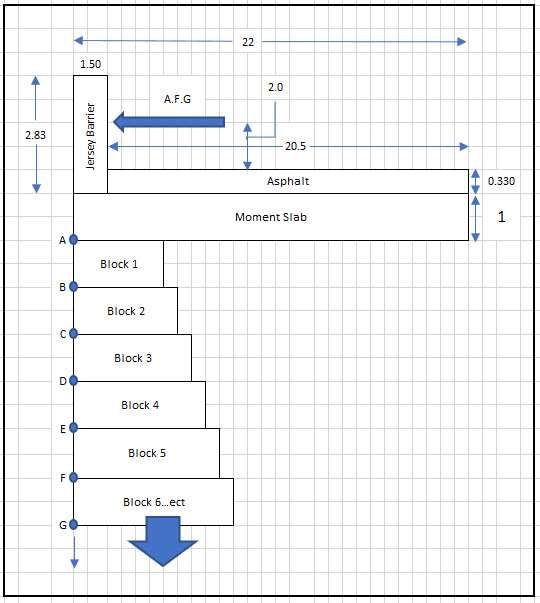I am designing a segmented block retaining wall with a barrier on the top. The top of this retaining wall is a road and the barrier, according to TL-3, will have a 54K horizontal point load to account for the impact from a car. I have designed a spreadsheet that will calculate the bearing pressure if it were just a simple retaining wall with a simple back slope, but I am unsure how to handle the point load in the bearing calculation.
I currently have been attempting to add the vertical point load (Pveh) with the two other horizontal forces from the soils (Ps) and the surcharge loading (Pq) to get a total P. But this approach is giving me bearing pressures that are extremely high which makes me believe I am doing this wrong. If there is any code or material related to this, I would be more than willing to read but I have been unable to find anything so far.
Any help would be much appreciated!
Thank you!
I currently have been attempting to add the vertical point load (Pveh) with the two other horizontal forces from the soils (Ps) and the surcharge loading (Pq) to get a total P. But this approach is giving me bearing pressures that are extremely high which makes me believe I am doing this wrong. If there is any code or material related to this, I would be more than willing to read but I have been unable to find anything so far.
Any help would be much appreciated!
Thank you!

